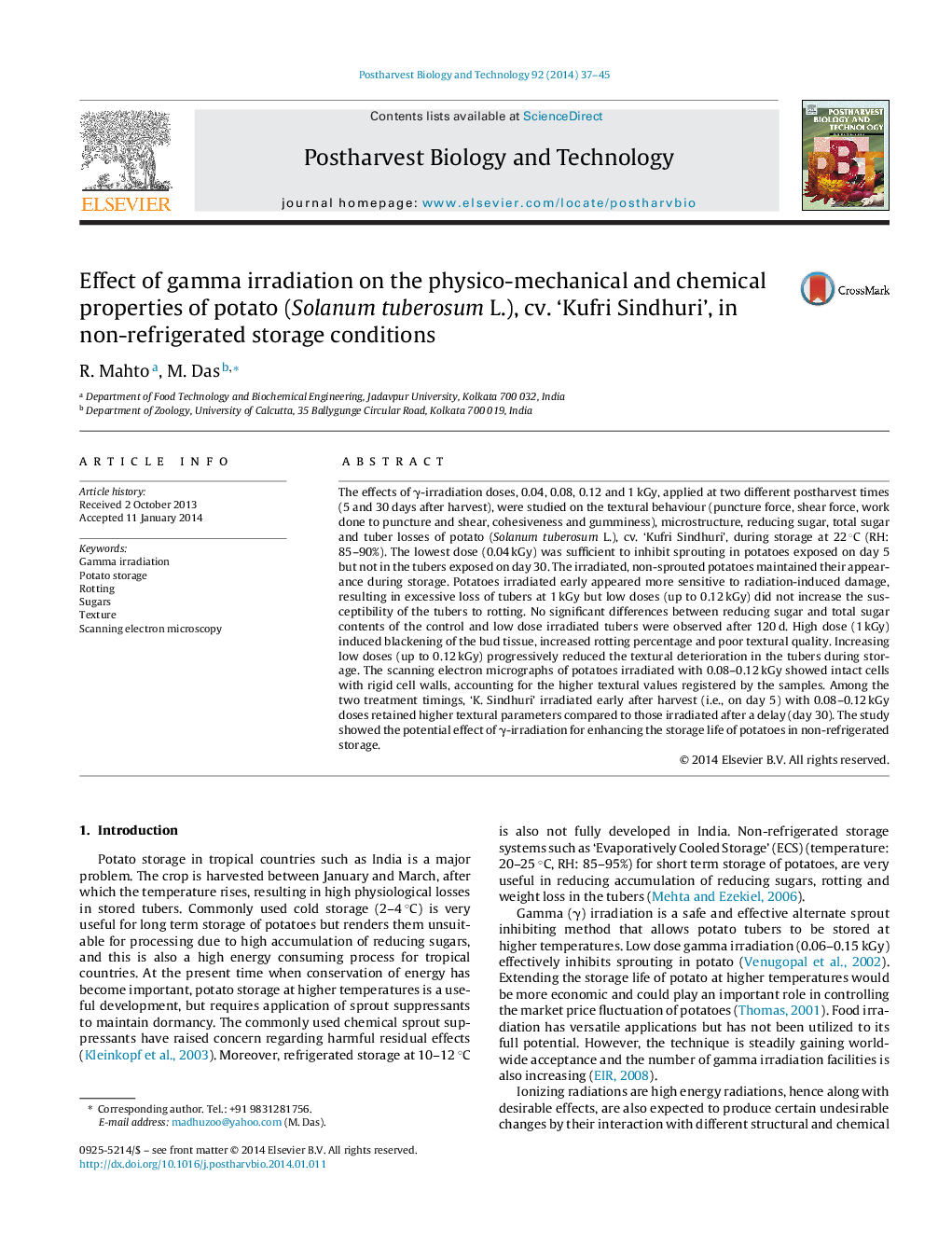| Article ID | Journal | Published Year | Pages | File Type |
|---|---|---|---|---|
| 4518213 | Postharvest Biology and Technology | 2014 | 9 Pages |
•0.08–0.12 kGy inhibited sprouting in potatoes exposed on the 5th or 30th day of harvest.•Low doses (up to 0.12 kGy) did not significantly increase the rotting percentage.•No significant differences in sugar content of the control and low dose treated tubers were found.•Increasing doses (up to 0.12 kGy) progressively reduced textural loss during storage.•Samples exposed on the 5th day with 0.08 and 0.12 kGy retained puncture force values for 120 d.
The effects of γ-irradiation doses, 0.04, 0.08, 0.12 and 1 kGy, applied at two different postharvest times (5 and 30 days after harvest), were studied on the textural behaviour (puncture force, shear force, work done to puncture and shear, cohesiveness and gumminess), microstructure, reducing sugar, total sugar and tuber losses of potato (Solanum tuberosum L.), cv. ‘Kufri Sindhuri’, during storage at 22 °C (RH: 85–90%). The lowest dose (0.04 kGy) was sufficient to inhibit sprouting in potatoes exposed on day 5 but not in the tubers exposed on day 30. The irradiated, non-sprouted potatoes maintained their appearance during storage. Potatoes irradiated early appeared more sensitive to radiation-induced damage, resulting in excessive loss of tubers at 1 kGy but low doses (up to 0.12 kGy) did not increase the susceptibility of the tubers to rotting. No significant differences between reducing sugar and total sugar contents of the control and low dose irradiated tubers were observed after 120 d. High dose (1 kGy) induced blackening of the bud tissue, increased rotting percentage and poor textural quality. Increasing low doses (up to 0.12 kGy) progressively reduced the textural deterioration in the tubers during storage. The scanning electron micrographs of potatoes irradiated with 0.08–0.12 kGy showed intact cells with rigid cell walls, accounting for the higher textural values registered by the samples. Among the two treatment timings, ‘K. Sindhuri’ irradiated early after harvest (i.e., on day 5) with 0.08–0.12 kGy doses retained higher textural parameters compared to those irradiated after a delay (day 30). The study showed the potential effect of γ-irradiation for enhancing the storage life of potatoes in non-refrigerated storage.
